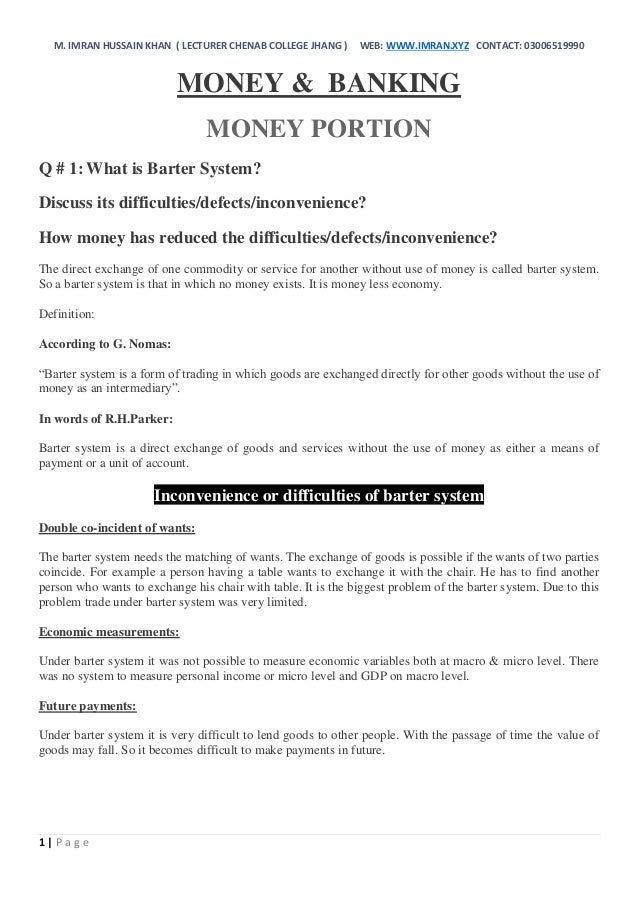Bba 3rd Year Notes
Dec 09, 2018 Hola BBA Students, Welcome to the BBA Third year thread on Studynama. Here, I am sharing the complete collection of notes and eBooks for the third year subjects taught in BBA. All these notes and eBooks will help you study and prepare well for your BBA semester exams. Free Educational Notes, Video Lectures and Study Material. Download PDF Notes. Download BBA third year notes and eBooks in easy to study PDF format. 16 BBA second year subjects study material is available for FREE access. Click here to start downloading.
Business Statistics Notes For Bba 2nd Sem
Financial management complete note.1.What is Financial Management?Meaning. financial management meansto plan and control the finance of thecompany. It is done to achieve the objectivesof the company. Financial management is concerned withraising financial resources and their effectiveutilisation towards achievingtheorganisational goals.'
NIAZ SAHIL.Scope of Financial Management. Financial management has a wide scope. According to Dr.
Saxena, the scope of financial management includesthe following five 'A's. Anticipation: Financial management estimates the financialneeds of the company. That is, it finds out how much financeis required by the company. Acquisition: It collects finance for the company fromdifferent sources. Allocation: It uses this collected finance to purchase fixedand current assets for the company. Appropriation: It divides the company's profits among theshareholders, debenture holders, etc.
It keeps a part of theprofits as reserves. Assessment: It also controls all the financial activities of thecompany. Financial management is the most importantfunctional area of management.NIAZ SAHIL.,NIAZ SAHIL.Wealth maximization.
Wealth maximization isa FINANCIAL management technique thatconcentrates its focus on increasing the networth or shareholder capital gains, of a companyor firm. This approach contrasts with the moretraditional method of management that seeksout increased profits above all other pursuits.Those who pursue this technique also seek outprofits, but they concern themselves with cashflow, earnings per share of shareholders, and thesocial value of any FINANCIAL initiatives as wellNIAZ SAHIL.profit maximization. When a firm applies profit maximization, it isbasically saying that its primary focus is onprofits, and it will use its resources solely toget the biggest profits possible, regardless ofthe consequences or the risk involved. Profitmaximization is a generally short-termconcept.
Application usually lasts less thanone year, although somecompanies employthis strategy exclusively, constantly jumping onthe next big trend.NIAZ SAHIL.wealth maximization vs profit maximization. The financial management has come a longway by shifting its focus from traditionalapproach to modern approach. The modernapproach focuses on wealth maximizationrather than profit maximization. This gives alonger term horizon for assessment, makingway for sustainable performance bybusinesses.NIAZ SAHIL.Accounting and Finance. Accounting can be broadly defined as thepreparation, evaluationand management of FINANCIAL records, whilefinance is best described as the study andmanagement of investments. Accountants aretherefore more concerned with budgets, audits,taxes and business FINANCIAL operations, whilefinancial analysts are typically experts in stocks,bonds and various other financial productsavailable to corporate or individual investors.NIAZ SAHIL.Capital BudgetingCapital budgeting, which is also called'investment appraisal,' is the planning processused to determine which of an organization'slong term investments such as new machinery,replacement machinery, new plants, newproducts, and research development projectsare worth pursuing. It is to budget for majorcapital investments or expenditures.NIAZ SAHIL.



Capital budgeting is a required managerial tool.One duty of a financial manager is to chooseinvestments with satisfactory cash flows andrates of return. Therefore, a financial managermust be able to decide whether an investment isworth undertaking and be able to chooseintelligently between two or more alternatives.To do this, a sound procedure to evaluate,compare, and select projects is needed. Thisprocedure is called capital budgeting.NIAZ SAHIL.importance of capital budgeting. Identify Opportunities.
As a business owner or entrepreneur, you are often presentedwith many different potential opportunities. You could go in anumber of different directions as a company. The first step in thecapital budgeting process is identifying which opportunities areavailable to you at the time. Before you can make a decision hehave to know what is available first. Assess Opportunities.
Once you have identified the possible opportunities for yourbusiness, the next step in the process is to assess each opportunityindividually. You to compare each opportunity against your visionfor the company and the mission statement. Look at the values ofeach opportunity and see if they match with your own values.Many of the potential opportunities can be eliminated in the stepbefore you can get into the FINANCIAL information. You want onlypursue opportunities that match your business plan.NIAZ SAHIL.importance of capital budgeting.
Making Decisions. Ultimately, the objective of capital budgeting is to helpyou make decisions that are smart for yourbusiness. Taking the necessary steps to evaluate eachopportunity can help you avoid disastrousconsequences for your business. If these steps are nottaken, you can take on a project that does not bringany value to your company. Ultimately, it could proveto be the last mistake your company remakes.Therefore, the capital budgeting process is crucial toconsider before making any big decisions for any typeof project.NIAZ SAHIL.,.
There are a number of capital budgetingtechniques that can be used to determine theviability and profitability of capital budgetand INVESTMENTdecisions. These techniquesinclude:. The Accounting Rate of Return Method.
The Payback Period Method. The Net Present Value Method. The Profitability Index Method.
The Internal Rate of Return MethodNIAZ SAHIL.ARR. Accounting rate of return (also known as simplerate of return) is the ratio of estimated accountingprofit of a project to theaverage INVESTMENTmade in the project. ARR isused in INVESTMENTappraisal. Decision Rule.
Accept the project only if its ARR is equal to orgreater than the required accounting rate ofreturn. In case of mutually exclusive projects,accept the one with highest ARR.NIAZ SAHILARR =Average Accounting ProfitAverage INVESTMENT.,. 1. Add up all positive cash flows = $2m + $2m +$2m + $3m = $9m. 2. Subtract cost of investment = $9m - $5m = $4m.
3. Divide by life span = $4m/4 years = $1m. 4. Calculate the percentage return: $1m/$5m x 100= 20%NIAZ SAHIL.Payback PeriodThe payback period is the most basic and simpledecision tool. With this method, you arebasically determining how long it will take to payback the initial investment that is required toundergo a project.In order to calculate this, you would take thetotal cost of the project and divide it by howmuch cash inflow you expect to receive eachyear;NIAZ SAHIL.npv. The difference between the present value ofcash inflows and the present value of cashoutflows.
NPV is used in capital budgeting toanalyze the profitability ofan INVESTMENT or project. A Net Present Value (NPV) that is positive isgood (and negative is bad). But your choice of interest rate can changethings!NIAZ SAHIL.Internal Rate of Return (IRR)The internal rate of return is a discount rate that iscommonly used to determine how much of a returnan investor can expect to realize from a particularproject. Strictly defined, the internal rate of returnis the discount rate that occurs when a project isbreak even, or when the NPV equals 0.
Here, the decision rule is simple: choose theproject where the IRR is higher than the cost offinancing.NIAZ SAHIL.Look Out!For the IRR, the decision rules are asfollows:If IRR hurdle rate, accept the projectIf IRR.
Business LawLaw in a broad sense means rules, regulations, guidelines, principles etc. And there are laws which regulate business, trade and commerce. Business law has day to day application in any kind of business. Business managers striving for excellence must understand and apply the various laws of business in addition to acquiring knowledge and skills in their respective domains of management. The laws range from Corporate laws, Companies Act, Labour Legislation, Laws of Contracts. Taxation Laws etc.
The Indian Contract Act 1872Click on the link below:2. The Sales of Goods Act 1930Click on the link below:3. The Consumer Protection Act 1986The Consumer Protection Act 1986: salient features, definition of consumer,Grievance Redressal machinery as regards to the Grievances of the customers /consumers.Click on the link below.